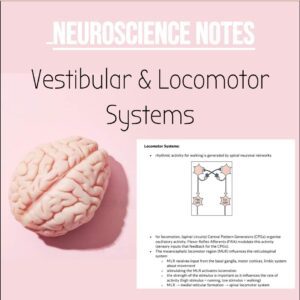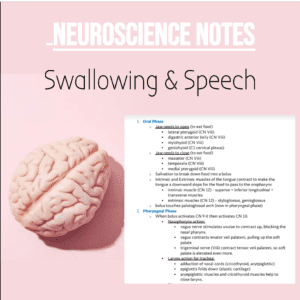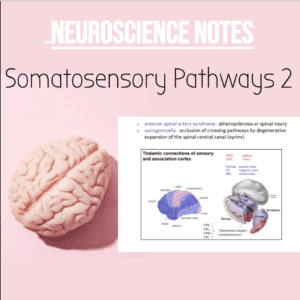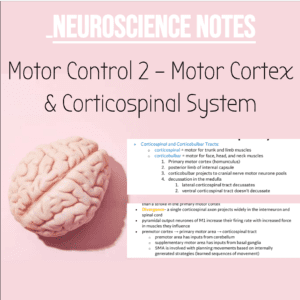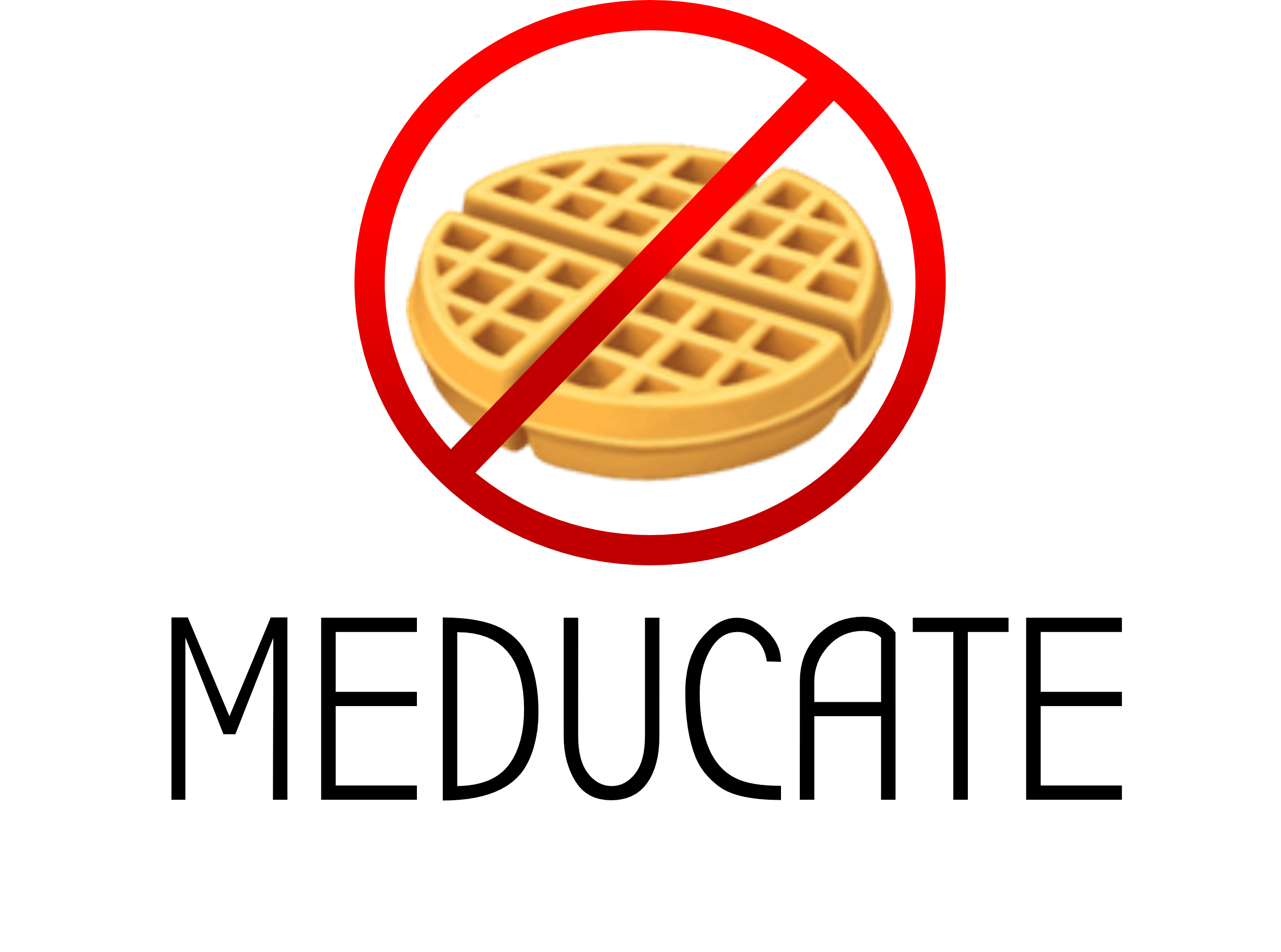🖋️ Notes: nsb neuroscience - Motor Control & Reflexes 🧠
Similar resources:
Y2, Y2Notes, Y2 NSB, NSBNeuro Notes, Neuro Neuroscience, Christopher Yeo, Chris Yeo, NSBMovement
Alpha motor neurones are in the ventral horns of the spinal cord
o these motor neurones are well organised according to the muscles they
control
▪ proximal muscles = medial in spinal cord
▪ distal muscles = lateral in spinal cord
▪ extensor muscles = more ventral in spinal cord in ventral horn
▪ flexor muscles = more dorsal in spinal cord in ventral horn
• Motor Neurone Pool- motor neurones that project to one muscle (can occupy
several spinal segments)
• Motor Unit- a single motor neurone and all the muscle fibres it comes into
contact with
o motor units size principle
▪ small motor units have a large resistance (V=IR)
▪ large motor units have a small resistance
• Feedback:
o Muscle spindles (gamma neurone) (muscle stretch reflex)
o Golgi Tendon Organ (1b afferent neurone) (inverse myotatic reflex)
• Muscle Stretch Reflex (Tendon Jerk Reflex):
o helps maintain limb position as load varies
o uses muscle spindle (not GTO)
o inhibitory interneuron to antagonist muscle
N&B Neuroscience: Motor Control 1 –
Reflexes
Muscle Spindles in Stretch:
N&B Neuroscience: Motor Control 1 –
Reflexes
• descending pathways from the brain can control the 1a motor neurone and the
inhibitory interneuron
o the 1a inhibitory interneuron can be inhibited, so the antagonist muscle
contracts with the agonist muscle = co-contraction → stiff limb for
movement (walking downstairs)
o Renshaw Cells- activated by alpha motor neurones, and it then inhibits
the same motor neurone to prevent further movement and it stops the
movement (interneuron that tells a tiring muscle to relax)
• Inverse Myotatic Reflex
o Golgi tendon organ is the receptor
o 1b afferents detect the tension and send inhibitory interneuron to motor
neurone to the muscle to relax to drop the heavy object
